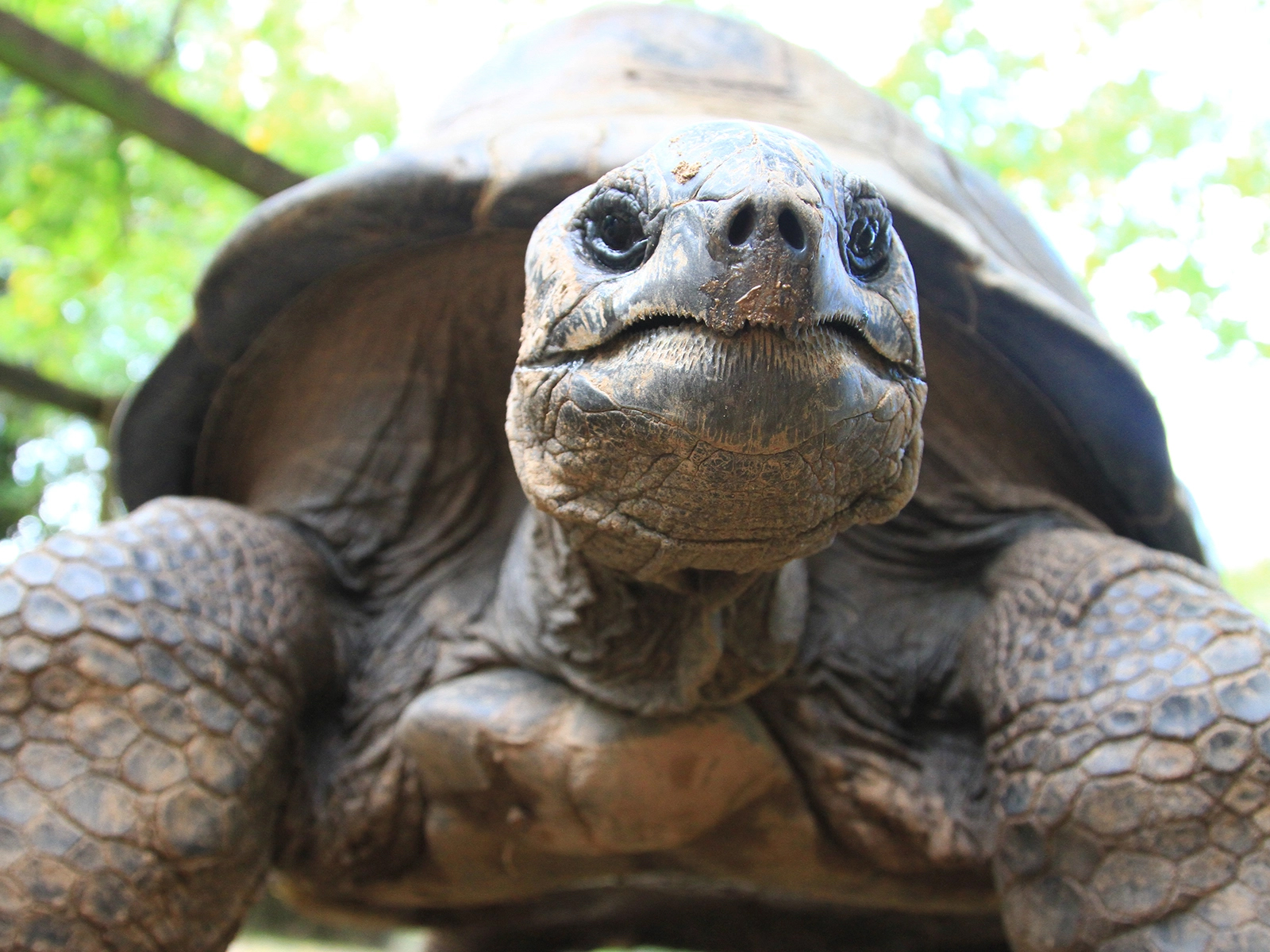Aldabra Tortoise
Geochelone gigantea
Class
Reptilia
Order
Chelonia
Family
Testudinidae
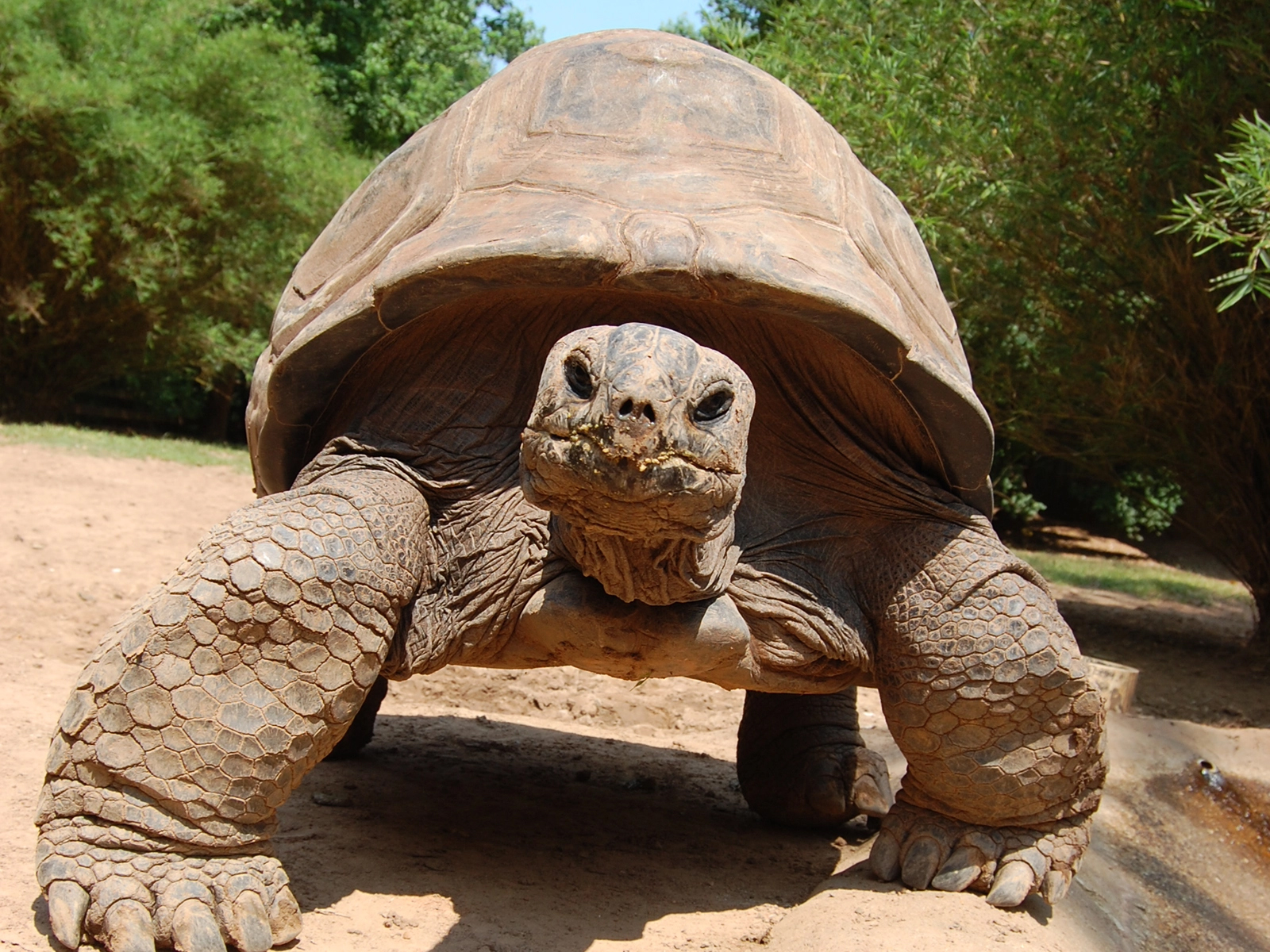
Reptilia
Chelonia
Testudinidae
Aldabra Atoll in the Seychelles Islands of the Indian Ocean
Male: Avg. 4 ft, 400 lbs
Female: Avg. 3 ft, 300 lbs
Semi-arid grasslands, scrub, mangrove swamp, and coastal dune
Clutch: 9 to 25 eggs
Incubation: About 4 months
Mainly grasses, sedges, herbs, and woody plants
Vulnerable
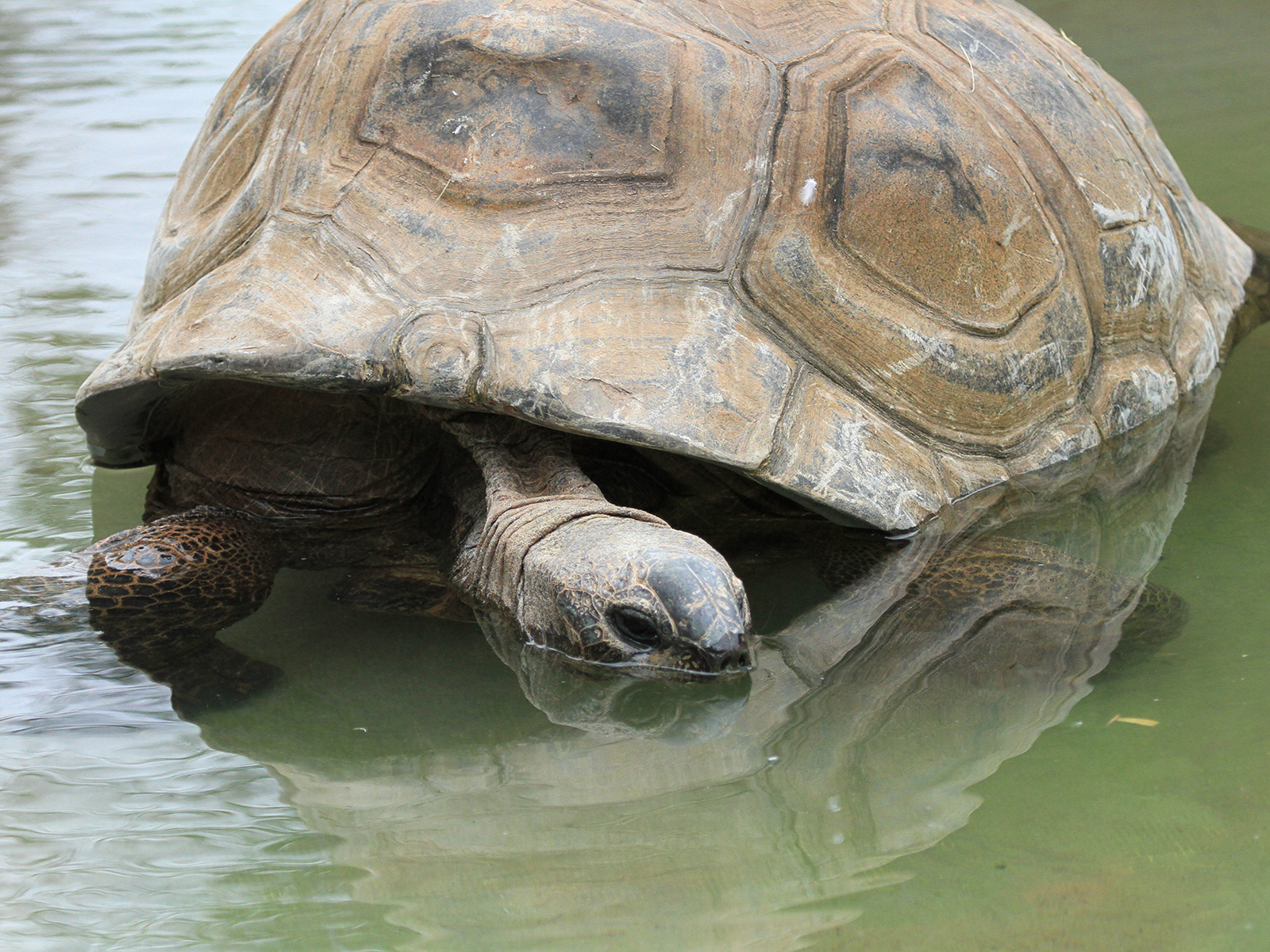
Because they are so heavy, Aldabra tortoises are terrible swimmers, but enjoy cooling off in shallow water and mud. Their high shell allows them to release heat.
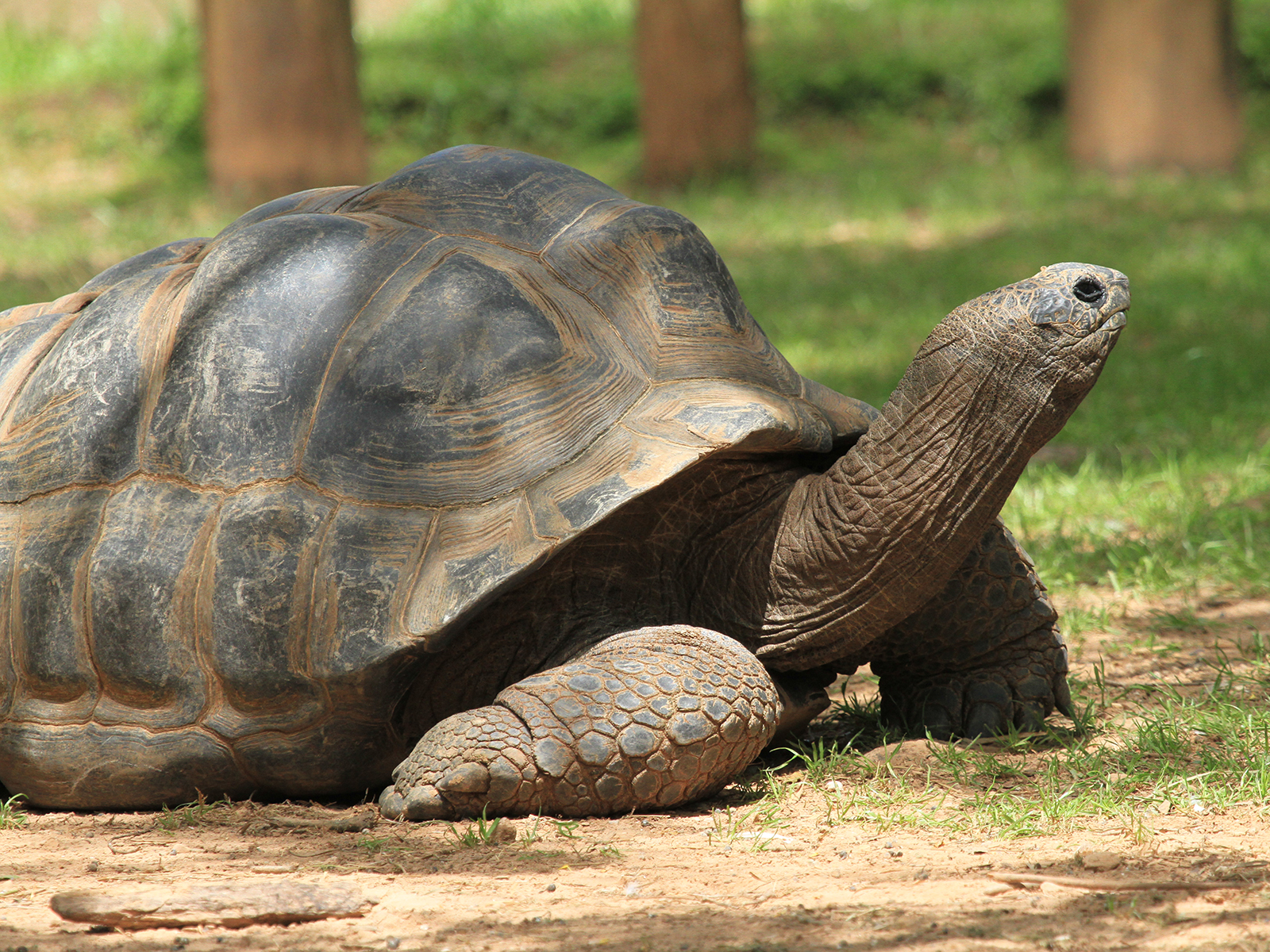
By knocking over small trees and shrubs to reach nutritious leaves, the tortoises create pathways and clearings within the forestlands. This activity benefits other animals by making the habitat more accessible and influencing the distribution of vegetation.
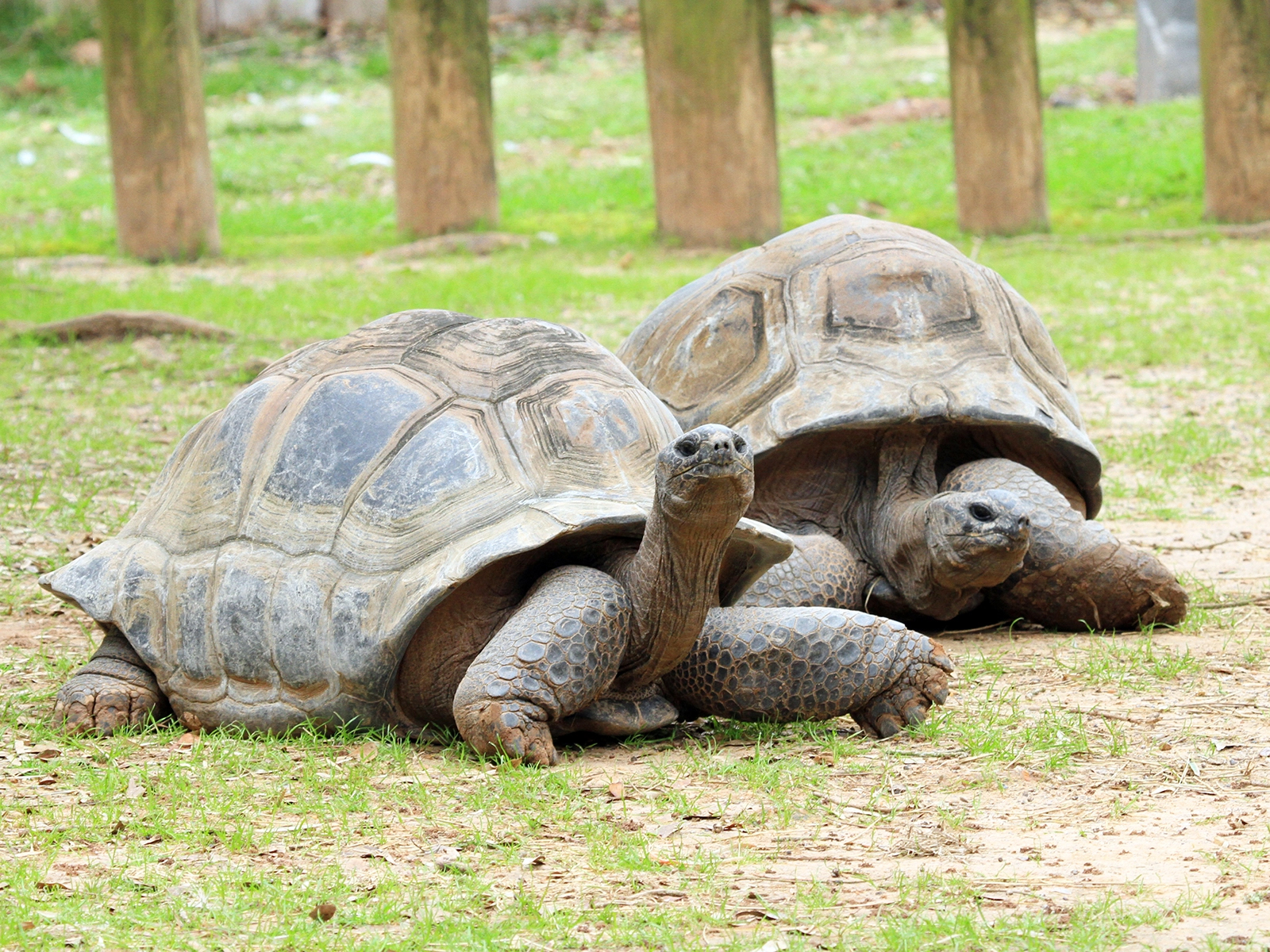
At birth, young Aldabra tortoises are only about three inches long, but they can grow to over 4 feet long and weigh more than 500 pounds. No one knows exactly how long these animals are capable of living, but they are believed to easily surpass 100 years.
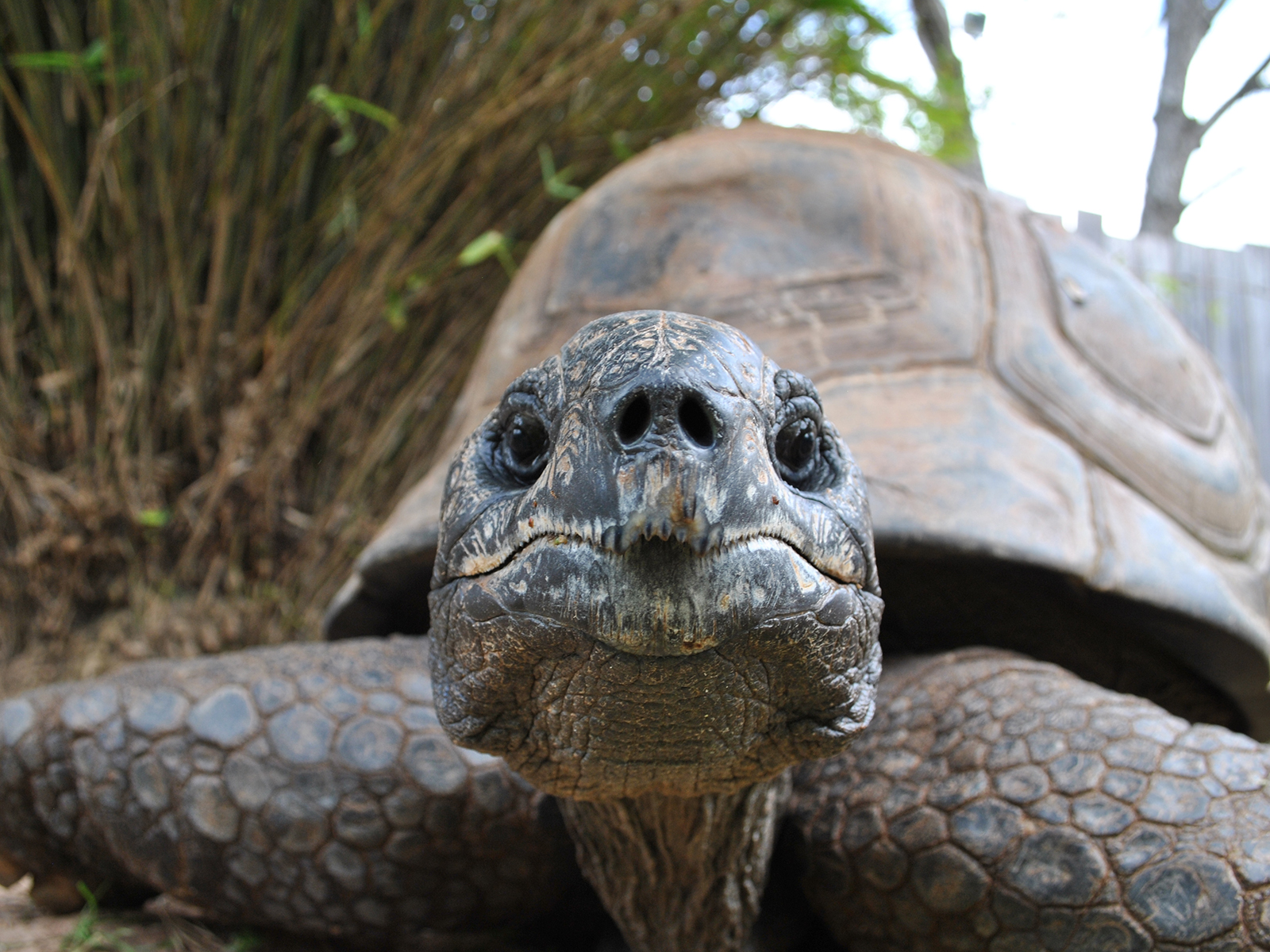
The Aldabra tortoise was near extinction at the turn of the 20th century. Hunting by sailors and predation upon eggs and hatchlings by introduced species such as pigs, rats, and cats wiped out the other 18 species of tortoises that inhabited Madagascar and the Seychelles Islands.
However, conservation efforts and international trade regulations have helped the population to increase, although they still remain threatened.
Big Al the Aldabra tortoise has been an icon at the Alexandria Zoo since his arrival in May 1975. For decades, his magnificent presence has served as a powerful, living link to the natural world, sparking wonder and conservation appreciation in generations of zoo guests.
Big Al shares his habitat with three other Aldabra tortoises, Hugo, Grunt, and Gimpy.
Raise Awareness of Habitat Threats. The main wild population is on the low-lying Aldabra Atoll, which is highly vulnerable to rising sea levels and extreme weather events caused by climate change.
Avoid the Exotic Pet Trade. Never purchase a wild-caught tortoise.
